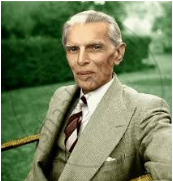Advertisements
Advertisements
प्रश्न
Match the following:
| Column A | Column B |
| 1. Dadabhai Naoroji | (a) 1905 |
| 2. Assertive nationalists | (b) separate electorates |
| 3. Partition of Bengal | (c) use of only Indian goods |
| 4. Muslim League | (d) immediate freedom from British rule |
| 5. Swadeshi | (e) early nationalists |
उत्तर
| Column A | Column B |
| 1. Dadabhai Naoroji | (e) early nationalists |
| 2. Assertive nationalists | (d) immediate freedom from British rule |
| 3. Partition of Bengal | (a) 1905 |
| 4. Muslim League | (b) separate electorates |
| 5. Swadeshi | (c) use of only Indian goods |
APPEARS IN
संबंधित प्रश्न
Choose the correct answer:
The Muslim League was established in________.
State whether the following is true or false:
Tilak knew that the British would concede to the demand for swaraj easily without any struggle.
This is the picture of a national leader

Identify the person in the picture.
Fill in the blank:
The menacing presence of the Japanese army on the eastern borders of India posed a serious threat to___________.
Answer the following question briefly:
With reference to the Indian national movement, answer the following: Examine the role of Subhash Chandra Bose in the Indian freedom struggle.
Answer the following question briefly:
With reference to Indian independence, answer the following question: What is the significance of 26 January 1950?
Fill in the blanks:
All India Trade Union Congress was founded by ____ in ________.
Fill in the blank:
The Congress session of March 1940 was presided over by _______.
Fill in the blank:
“Delhi Chalo” and “Jal Hind” were two slogans given to us by _______
Answer the following question:
Describe the provisions of the Government of India Act (1919).
